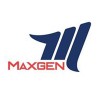Filter interviews by
Nice Software Solutions Interview Questions and Answers
7 Interview questions
Types of LOD in Tableau include Fixed, Include, and Exclude.
Fixed LOD: Computes a value using a specific dimension without reference to the view level
Include LOD: Computes a value at a specified dimension level
Exclude LOD: Computes a value at a specified dimension level excluding the dimension specified
A junk dimension is a single dimension table that combines multiple low-cardinality attributes that are not related to the fact table.
Contains attributes that are not related to the fact table
Reduces the number of dimension tables in the data warehouse
Helps in simplifying the data model and improving query performance
SCD types refer to slowly changing dimensions in data warehousing, categorized into Type 1, Type 2, and Type 3.
Type 1 SCD: Overwrites existing data with new information, losing historical data.
Type 2 SCD: Maintains historical data by creating new records for changes, with a surrogate key for each version.
Type 3 SCD: Keeps both old and new values in the same record, with separate columns for each version.
WHERE clause filters rows before grouping, while HAVING clause filters groups after grouping.
WHERE clause is used to filter rows based on a condition before grouping.
HAVING clause is used to filter groups based on a condition after grouping.
WHERE clause is used with SELECT, UPDATE, DELETE statements.
HAVING clause is used with GROUP BY clause.
WHERE clause cannot contain aggregate functions.
HAVING clause can contain...
Control flow and data flow are two important components of SSIS. There are various types of transformations available in SSIS.
Control flow is used to manage the flow of tasks and containers in a package.
Data flow is used to extract, transform, and load data from various sources to destinations.
Transformations are used to modify data during the ETL process. There are various types of transformations such as Aggrega...
Types of filters used in Tableau include extract filters, context filters, data source filters, and quick filters.
Extract filters are used to filter data before it is extracted into Tableau.
Context filters are used to filter data in a specific order, affecting subsequent filters.
Data source filters are applied at the data source level, affecting all workbooks and views using that data source.
Quick filters allow us...
Snowflake schema is a normalized form of star schema with multiple levels of dimension tables.
Snowflake schema has normalized dimension tables, leading to reduced redundancy and improved data integrity.
Star schema has denormalized dimension tables, which can lead to data redundancy but faster query performance.
Snowflake schema is more complex to query compared to star schema due to multiple levels of normalization...
Nice Software Solutions Interview Experiences
10 interviews found
I applied via LinkedIn and was interviewed in Jun 2024. There were 2 interview rounds.
(1 Question)
- Q1. All questions are scenario based interviewed for sql
(1 Question)
- Q1. SQL related questions and perform practical queries
Interview Preparation Tips
I asked HR she just tried to explain me about company policy and all which is totally rubbish. They didnt take there mistakes and not even single apologies.
Also for this position they told to attained bootcamp clear exam And all then they will offer permanent job with including 1 yr bond + 6 working days (WFO) with 20% salary hike only.. i recommend people don't waste your time and being victim of frustration with such poor management
Normal apti question
(1 Question)
- Q1. Normal sql question and analytical questions
(1 Question)
- Q1. Basic discussion
I applied via Naukri.com and was interviewed in Apr 2024. There was 1 interview round.
(4 Questions)
- Q1. Tell me about SCD types with examples.
- Ans.
SCD types refer to slowly changing dimensions in data warehousing, categorized into Type 1, Type 2, and Type 3.
Type 1 SCD: Overwrites existing data with new information, losing historical data.
Type 2 SCD: Maintains historical data by creating new records for changes, with a surrogate key for each version.
Type 3 SCD: Keeps both old and new values in the same record, with separate columns for each version.
- Q2. What is junk dimension?
- Ans.
A junk dimension is a single dimension table that combines multiple low-cardinality attributes that are not related to the fact table.
Contains attributes that are not related to the fact table
Reduces the number of dimension tables in the data warehouse
Helps in simplifying the data model and improving query performance
- Q3. Snowflake Architecture
- Q4. Snowflake Schema vs Star Schema
- Ans.
Snowflake schema is a normalized form of star schema with multiple levels of dimension tables.
Snowflake schema has normalized dimension tables, leading to reduced redundancy and improved data integrity.
Star schema has denormalized dimension tables, which can lead to data redundancy but faster query performance.
Snowflake schema is more complex to query compared to star schema due to multiple levels of normalization.
Star...
(1 Question)
- Q1. Asked SQL queries

(2 Questions)
- Q1. Tell me about yourself
- Q2. Tell them about yourself
Interview Preparation Tips
Online SharePoint Aptitude Test.
On mail they send and need to submit file
I applied via Naukri.com and was interviewed before Sep 2023. There was 1 interview round.
(2 Questions)
- Q1. Types of LOD in tableau
- Ans.
Types of LOD in Tableau include Fixed, Include, and Exclude.
Fixed LOD: Computes a value using a specific dimension without reference to the view level
Include LOD: Computes a value at a specified dimension level
Exclude LOD: Computes a value at a specified dimension level excluding the dimension specified
- Q2. Types of filter used
- Ans.
Types of filters used in Tableau include extract filters, context filters, data source filters, and quick filters.
Extract filters are used to filter data before it is extracted into Tableau.
Context filters are used to filter data in a specific order, affecting subsequent filters.
Data source filters are applied at the data source level, affecting all workbooks and views using that data source.
Quick filters allow users t...
In the assignment, you are provided with
1. Raw content in PPT for that, you need to create an Animated slide with Voice Over sync.
2. One scenario for that you need to implicate that with graphics in Storyline 360 with Text 2 Speach audio and triggering
(1 Question)
- Q1. Normal discussion with HR like salary and location
Interview Preparation Tips
I applied via Other and was interviewed in Apr 2021. There was 1 interview round.
Interview Questionnaire
1 Question
- Q1. What is Control flow,data flow Types of transformation
- Ans.
Control flow and data flow are two important components of SSIS. There are various types of transformations available in SSIS.
Control flow is used to manage the flow of tasks and containers in a package.
Data flow is used to extract, transform, and load data from various sources to destinations.
Transformations are used to modify data during the ETL process. There are various types of transformations such as Aggregate, D...
Interview Preparation Tips
In my case they conducted 2 technical interviews and at the end they told me like the package I am asking is more than expectations.
Skills evaluated in this interview
I applied via Approached by Company and was interviewed before Jun 2021. There was 1 interview round.
(3 Questions)
- Q1. SQL is a must. And good soft skills will be cherry on top of the cake.
- Q2. Different types of joins in SQL?
- Q3. Difference between where and having clause.
- Ans.
WHERE clause filters rows before grouping, while HAVING clause filters groups after grouping.
WHERE clause is used to filter rows based on a condition before grouping.
HAVING clause is used to filter groups based on a condition after grouping.
WHERE clause is used with SELECT, UPDATE, DELETE statements.
HAVING clause is used with GROUP BY clause.
WHERE clause cannot contain aggregate functions.
HAVING clause can contain aggr...
Interview Preparation Tips
Skills evaluated in this interview
Top trending discussions






Nice Software Solutions Interview FAQs
Tell us how to improve this page.
Nice Software Solutions Interviews By Designations
- Nice Software Solutions Associate Consultant Interview Questions
- Nice Software Solutions Associate Interview Questions
- Nice Software Solutions Graphic Designer Interview Questions
- Nice Software Solutions Software Engineer Interview Questions
- Nice Software Solutions Ssis Developer Interview Questions
- Nice Software Solutions Software Trainee Interview Questions
- Nice Software Solutions Data Engineer Interview Questions
- Nice Software Solutions Tableau Developer Interview Questions
- Show more
Interview Questions for Popular Designations
Overall Interview Experience Rating
based on 10 interview experiences
Difficulty level
Duration
Interview Questions from Similar Companies
Nice Software Solutions Reviews and Ratings
based on 99 reviews
Rating in categories
|
Associate Consultant
58
salaries
| ₹6 L/yr - ₹12.1 L/yr |
|
BI Consultant
50
salaries
| ₹5.9 L/yr - ₹15 L/yr |
|
Consultant
43
salaries
| ₹11 L/yr - ₹20.4 L/yr |
|
Associate BI Consultant
32
salaries
| ₹4.2 L/yr - ₹11 L/yr |
|
Senior BI Consultant
28
salaries
| ₹9 L/yr - ₹24.8 L/yr |

Maxgen Technologies

JoulestoWatts Business Solutions

Value Point Systems

F1 Info Solutions and Services
- Home >
- Interviews >
- Nice Software Solutions Interview Questions

















